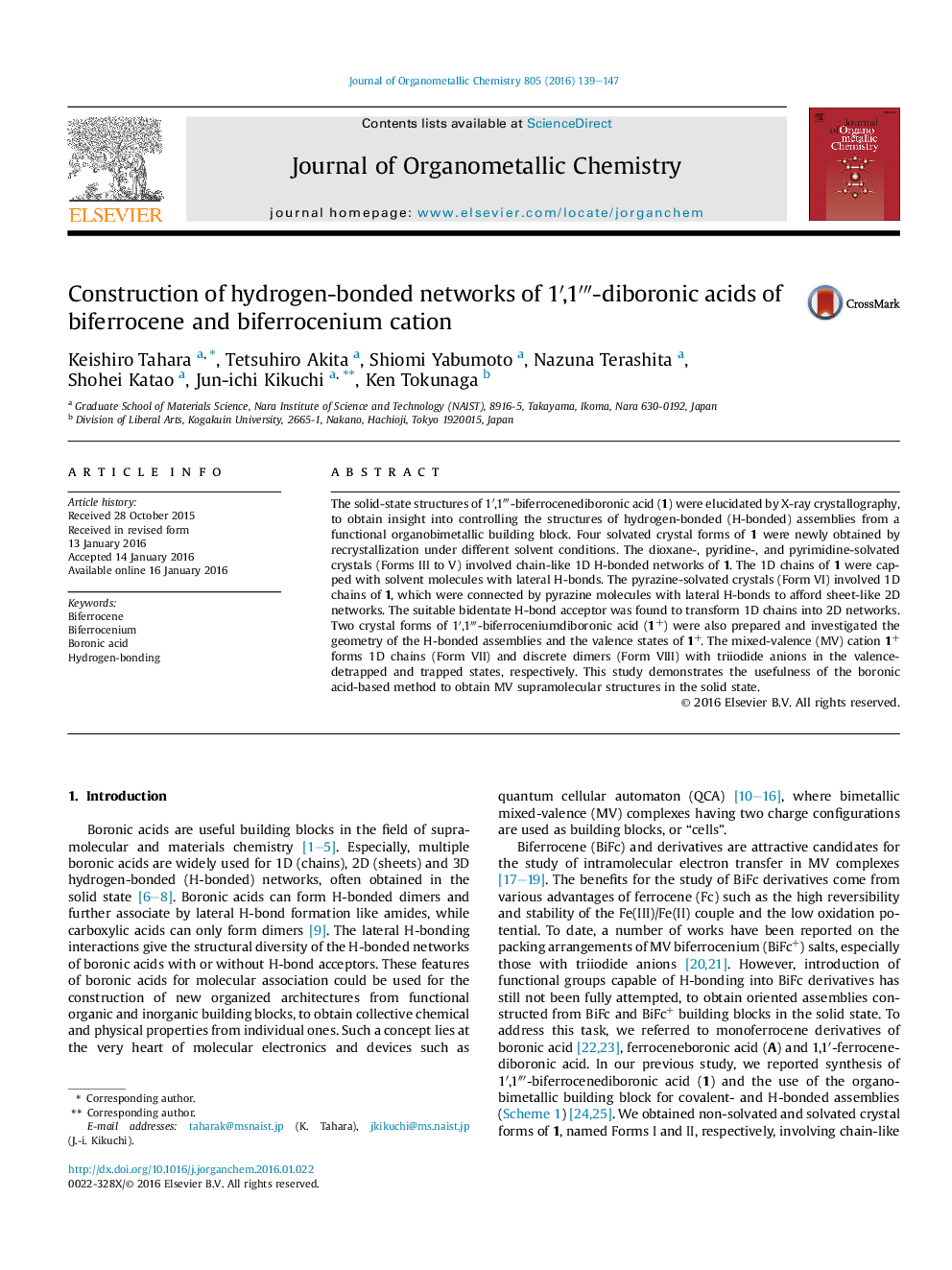| Article ID | Journal | Published Year | Pages | File Type |
|---|---|---|---|---|
| 1324800 | Journal of Organometallic Chemistry | 2016 | 9 Pages |
•Supramolecular structures of biferrocene and biferrocenium is reported.•Biferrocenediboronic acid formed hydrogen-bonded 1D chains in the solid state.•Solvent molecules capped or connected the 1D chains by hydrogen-bonding.•Biferroceniumdiboronic acid formed hydrogen-bonded 1D chains and discrete dimers.•The valence states of biferrocenium were detrapped and trapped, respectively.
The solid-state structures of 1′,1‴-biferrocenediboronic acid (1) were elucidated by X-ray crystallography, to obtain insight into controlling the structures of hydrogen-bonded (H-bonded) assemblies from a functional organobimetallic building block. Four solvated crystal forms of 1 were newly obtained by recrystallization under different solvent conditions. The dioxane-, pyridine-, and pyrimidine-solvated crystals (Forms III to V) involved chain-like 1D H-bonded networks of 1. The 1D chains of 1 were capped with solvent molecules with lateral H-bonds. The pyrazine-solvated crystals (Form VI) involved 1D chains of 1, which were connected by pyrazine molecules with lateral H-bonds to afford sheet-like 2D networks. The suitable bidentate H-bond acceptor was found to transform 1D chains into 2D networks. Two crystal forms of 1′,1‴-biferroceniumdiboronic acid (1+) were also prepared and investigated the geometry of the H-bonded assemblies and the valence states of 1+. The mixed-valence (MV) cation 1+ forms 1D chains (Form VII) and discrete dimers (Form VIII) with triiodide anions in the valence-detrapped and trapped states, respectively. This study demonstrates the usefulness of the boronic acid-based method to obtain MV supramolecular structures in the solid state.
Graphical abstract1′,1‴-Biferrocenediboronic acid recrystallized to afford hydrogen-bonded 1D chains capped with various solvent molecules. 1′,1‴-Biferroceniumdiboronic acid formed hydrogen-bonded 1D chains and discrete dimers in the valence-detrapped and trapped states, respectively, demonstrating the usefulness of the boronic acid-based method to obtain mixed-valence supramolecular structures in the solid state.Figure optionsDownload full-size imageDownload as PowerPoint slide
